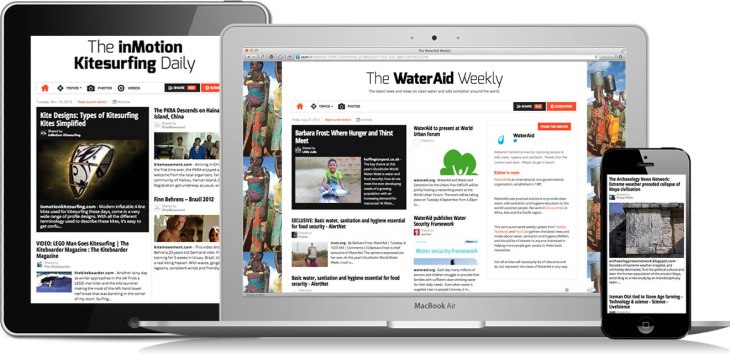Smallrivers, the Swiss startup behind news curation platform Paper.li, has raised further funding: $2 million from Debioinvestment, and Polytech Ventures (co-founded by the Swiss Federal Institute of Technologies where SmallRivers is based), along with existing investors/shareholders, including Kima Ventures, and various European angels, as well as co-founder Edouard Lambelet.
The new capital, which brings total funding to date to $7 million, will be used to consolidate revenue growth, with the aim to break even in the coming year, and deploy what Paper.li is describing as a new “semantic analysis engine” that will offer curators additional content discovery and filtering capabilities to make it even easier to build their own online newspapers.
If you’re followed on Twitter by a Paper.li user and tweet a lot of article links, you’re probably already familiar with the service, having been @mentioned as an inadvertent contributor to a Paper.li publication. However, for those who aren’t, Paper.li enables anybody to create their own “online newspaper” by curating interest-based content shared via social media (Twitter, Facebook, and G+), or pulled in from YouTube or blogs and other online content.
The result is a nicely designed “Web digest”, says co-founder Lambelet, facilitating “content discovery for granular/long tail topics and news”.
“Paper.li lets you build your personalized newspaper with content coming from sources you trust.” he explains. “You indicate these sources, you set filters (only when talking about this or that), and every day the service will present you with the matching content (if any) and will let you organize it in your paper.”
To date, Paper.li claims 3.7 million monthly users who are curating over 50 million articles daily, in 7 languages, no less. Lambelet tells me the concept of creating an online newspaper powered by the interest-graph is resonating with small enterprises, agencies, and consultants who use the service to produce a Web digest for their community, customers or prospects. “Paper.li happens to be a super tool for content marketing and inbound marketing”, he adds.
To that end, the service operates a classic freemium model. The basic publishing features are free, but a paid-subscription gives users the ability to use a custom domain, edit the CSS of your publication, plug in Google Analytics, run ads, and send email newsletters.
Lambelet cites Scoop.it, and Rebelmouse as competitors (though I’d also include Flipboard’s new magazine building feature). A key differentiator, he says, is the ability to curate “upcoming” content and Paper.li’s automated categorisation of feeds.
“This is the targeted monitoring aspect of Paper.li,” says Lambelet. “It couples powerful monitoring/listing capabilities with publishing functions, and (thanks to its semantic engine) categorizes the articles and facilitates their organization in the papers, for much easier discovery.”
